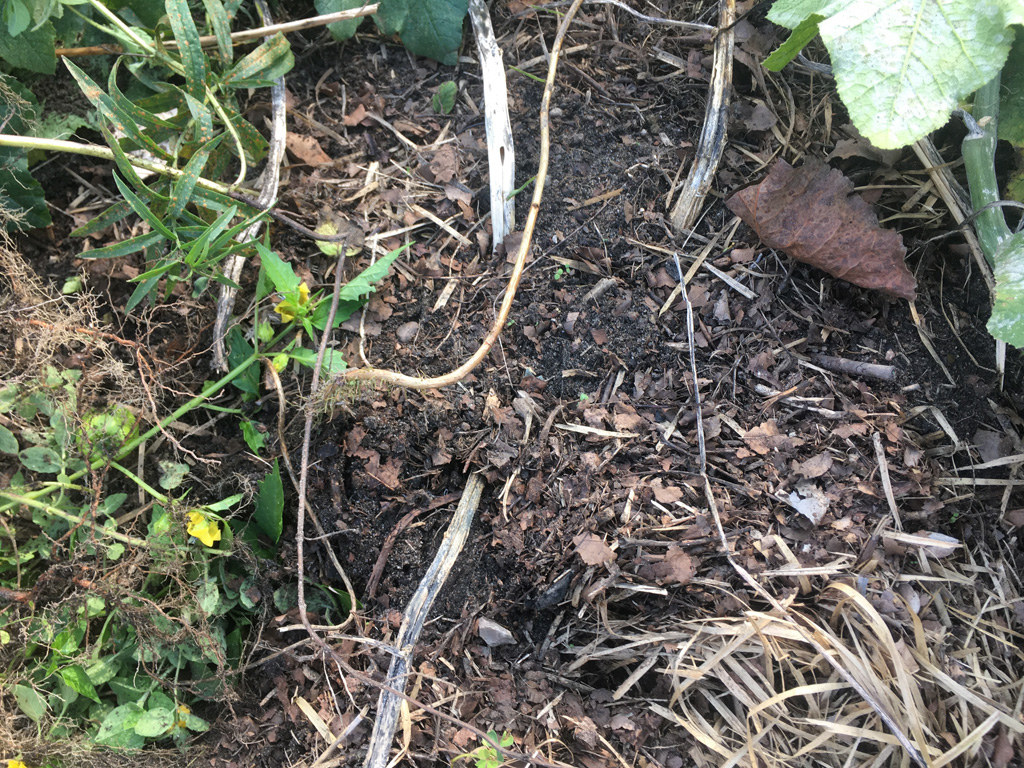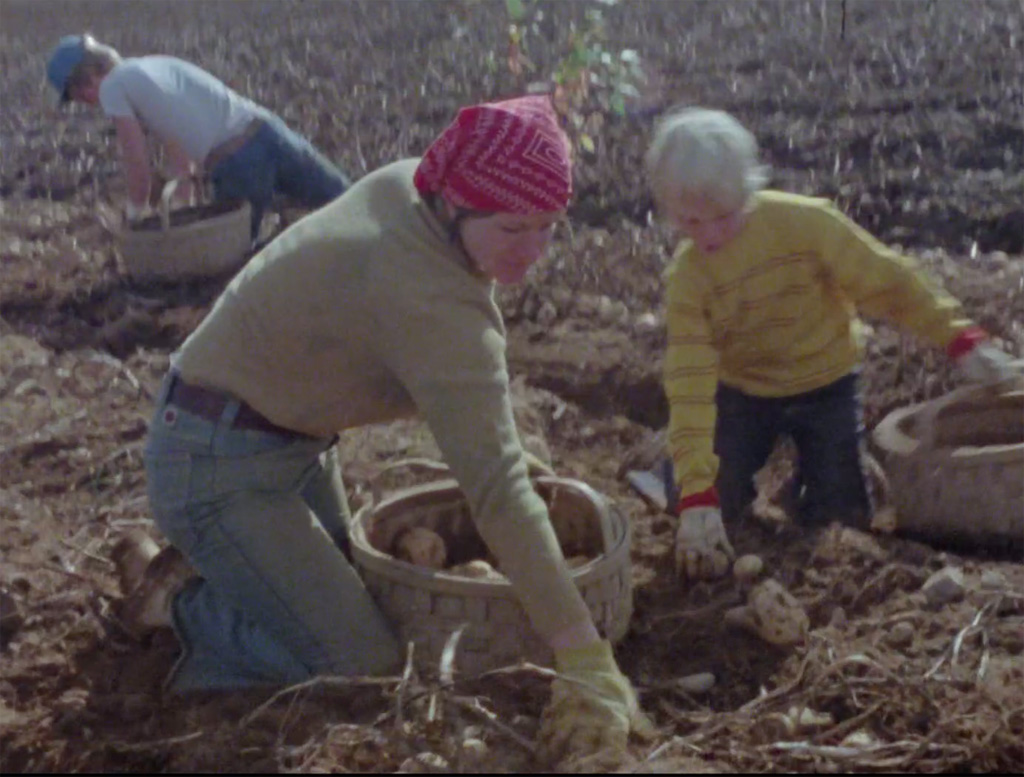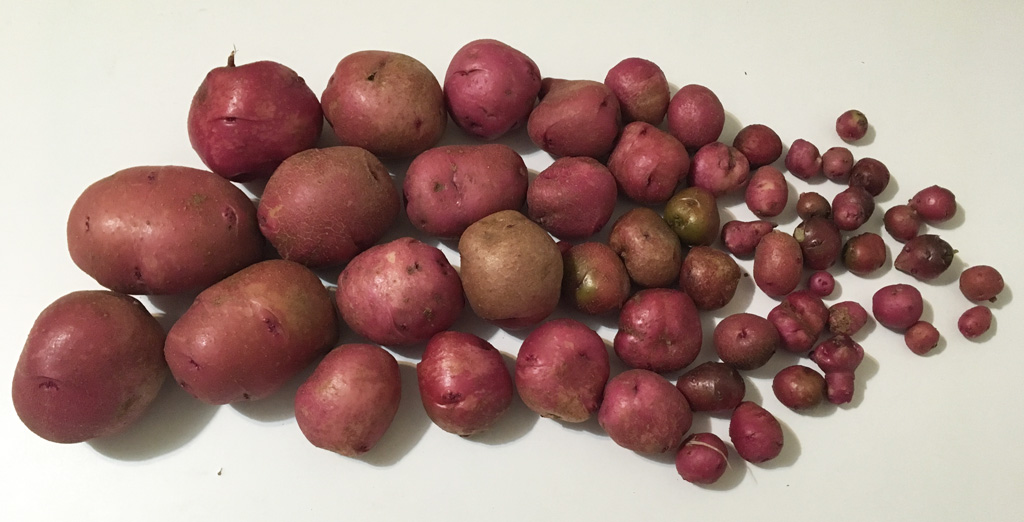“Potatoes are not a vegetable,” my friend declared, when I listed the varieties of produce she could harvest from my vegetable garden. Of course, her spontaneous excision of the pomme de Terre from the vegetable realm was rhetorical, made purely on the strength of her lack of interest in eating them. “I will take tomatoes, peppers, eggplant, and onions, but not potatoes.” I could have responded that the first three, being fruits, are not vegetables either. But I prefer to recognize and resist my pettier pedantic urges – so I can study them later, in private, unscathed.
Later, when walking past the late-summer garden that was yielding the former four delicacies, I asked her if she had ever dug potatoes, and if she would like to see me dig some, right now — the spade was at hand. “No,” was her emphatic answer, the single word set forth with enough momentum to dismiss both questions at once.
Yum… within limits
But many people do like potatoes, and a few even enjoy growing them. Until recently, I had long settled in to being big on the first but down on the second. I had never planted potatoes in my sprawling vegetable garden, primarily due to several memories of disappointment.
As a child, I once asked my father why a potato in our kitchen had grown a lot of sprouts. He told me that potatoes have “eyes” that will each produce a sprout, and if I took that potato and cut it up, one eye to each piece, and planted them in the garden, they would grow. So of course, I did. Only a few of them sprouted, which was disappointing in itself, but when fall came and I dug them up, the yield was disappointing too — just a dozen or so tiny potatoes. My mother cooked them and we ate them, but I still felt let down.
The next year, our grade school class had a springtime science activity where we all planted potatoes in little pots and placed them in the classroom window to see how well they would grow. Mine grew exactly like the others. The experiment now over, the teacher told us to take ours home if we wanted to keep it. I took mine, because I didn’t want to see it thrown away. But I didn’t see any point in growing a potato at home again either, so I put it in my locker instead, and soon forgot about it. After a couple of weeks, on the last day of classes, I had to clean out my locker, and this forced me to do something about it. I remember its spindly tendrils had grown to improbable lengths, all reaching for the same faint glow of fluorescent light filtering in through the ventilation slots near the top of the locker. As I took it out, thinking to finally discard it somehow, a girl nearby shamed me rather forcefully for treating the plant so badly. I remember feeling kind of bad for that.
Two decades later, I must have been fully healed because, when I found a sprouting potato in my Seattle kitchen, I became determined to grow it. I placed it in a five-gallon bucket of dirt, and it grew wonderfully on my fire escape — for a few weeks. Then it suddenly withered and died, for no apparent reason. That was enough.
Reaching out to old friends
But in the spring of 2020, when the eventual course and severity of the pandemic was still a looming uncertainty, a work acquaintance mentioned in a Zoom meeting that, this year, he was doubling up his garden: “We’re even planting potatoes. And we never plant potatoes, because they’re so cheap.”
I am not a particularly impressionable person, but for some reason, within a few days I had bought a few pounds of seed potatoes from Ann Arbor’s Downtown Home and Garden (part of which comprises one of the few old-fashioned seed stores left in the area, made all the more improbable by its downtown location). I discovered, much to my surprise, that certified seed potatoes are about the same price as store potatoes, if not perhaps a little cheaper.
I dutifully planted them alongside my usual crops, and was quite surprisingly shocked by the harvest that year. The potatoes grew like weeds, and the total yield was about 33 pounds, or more than ten times the weight of what I had planted. It was a lot of work digging them up — but I was hooked.

Emboldened
This year, flush with success, I planted another five or six pounds of seed potatoes, purchased from the same store. This summer was much more wet and lush than the last. While other parts of the garden were quickly consumed with weeds that seemed to grow much faster than I could find time to pluck them, the potatoes were unfazed. They literally outcompeted the weeds.
Come fall, the plants had died back and the potatoes were ready to dig. Below, we can see the dead stalks still standing in a bed of chopped-up leaves, with which I had hilled the plants, hoping to get a better yield. Along with the moist summer, it seems to have worked, because based on the yield of the first few plants, there could easily be a hundred pounds of potatoes in this garden, triple the previous harvest.

Fruit of the earth
When the soil is free and loose, digging for potatoes can be a pleasure. I simply reached in with my hands and tore apart the hill of mulch, and found a layer of German Butterball potatoes residing in a bohemian underground community, patiently waiting for spring, and taking the opportunity of this disturbance to remind me that I had once considered majoring in Archaeology.

It’s said that potatoes are “soil-particular” more than “climate-particular.” In other words, my garden must have the right kind of soil. This is not inconsistent with the fact that there are a good number of large potato farms in Michigan — but not in every part, because it depends on the specific qualities of the local soil, which varies more across any state than the climate. I have often found local potatoes available seasonally at the local grocery stores, put up in paper sacks, from various relatively small farms such as, for example, Horkey Brothers, and others. And of course, many much smaller farmers regularly sell them at local farmer’s markets.

Failing to scale
But despite my unexpected success with a small garden, it’s not to say that making a go of a potato farm is easy, nor that gathering them from the field was historically a pleasure for those involved.
This is conveyed exceptionally well by the short documentary film Potatoes, one of many fascinating documentaries produced by the National Film Board of Canada. Particularly striking is the scene at 4:40, where we see a woman and a child scrambling frantically on their knees to grab as many potatoes as possible as quickly as possible, their pay determined by their speed — the woman audibly gasping and panting a bit, as she works. While it may be true that this desperate, back-breaking work is no longer part of commercial potato farming, the film goes on to provide a good treatment of some of the social issues surrounding the displacement of family farms by corporate farming — which was already well underway in the mid 1970s, when the film was produced.

Thus, the idyllic pleasures of a home vegetable garden, as pleasant as they may be, become something quite different entirely, when scaled industrially and bent to our indomitable will as consumers. Thanks to mass production, we can buy a bag of bakers, and get exactly that, or a bag of steamers, and get exactly that — at a price that barely compensates the farmer, if at all, and thus perpetuates the endless growth and industrialization of commercial farming operations.

Roll your own
Incidentally, one overlooked casualty of the consumerization of the potato is the natural variation in size that having a potato garden will give you — a harvest of volumetric variations on a delicious theme, one that equally and inclusively welcomes tiny potatoes, for soups perhaps; medium potatoes, for steaming; and large potatoes for the microwave or the oven. And while your dwindling February potato bin might not be left with exactly the size of potato you want at the time you want it, it does provide an opportunity to challenge your favorite recipes with a change in form factor.
Growing your own is a whimsy that I highly recommend indulging, for the sake of your winter kitchen, as well as your summer garden.


